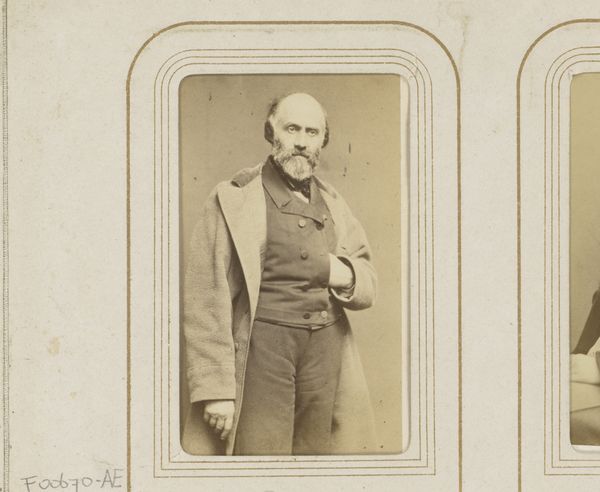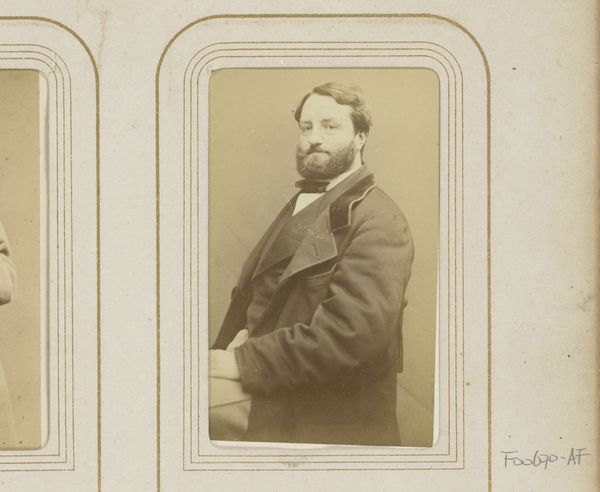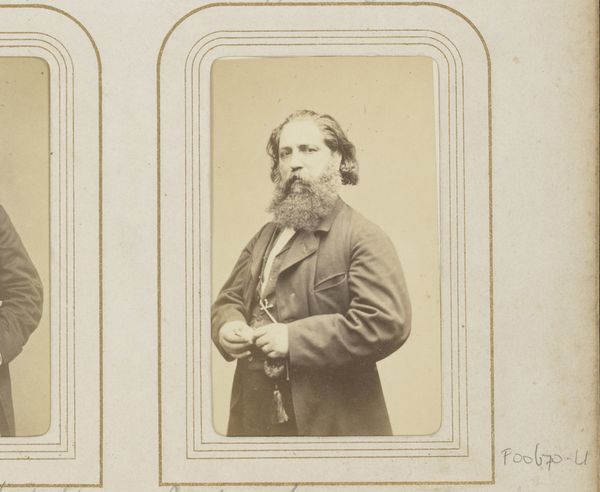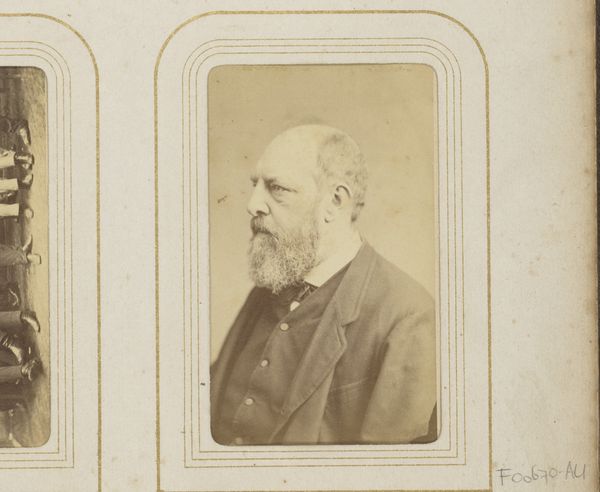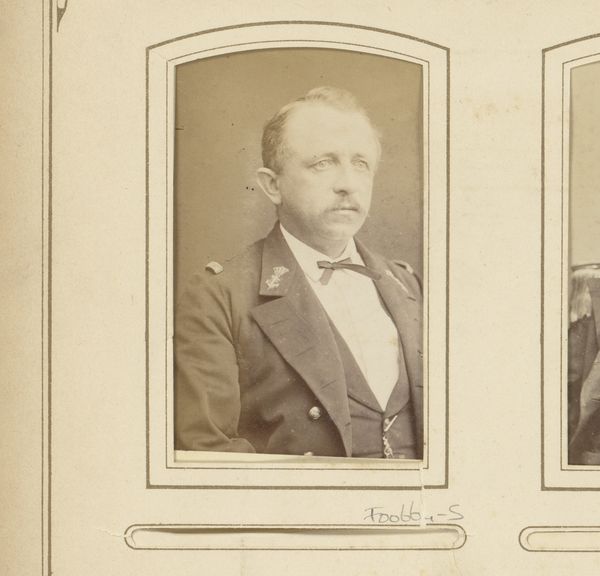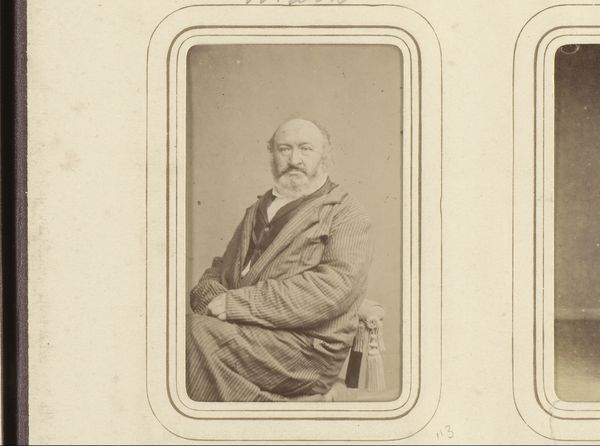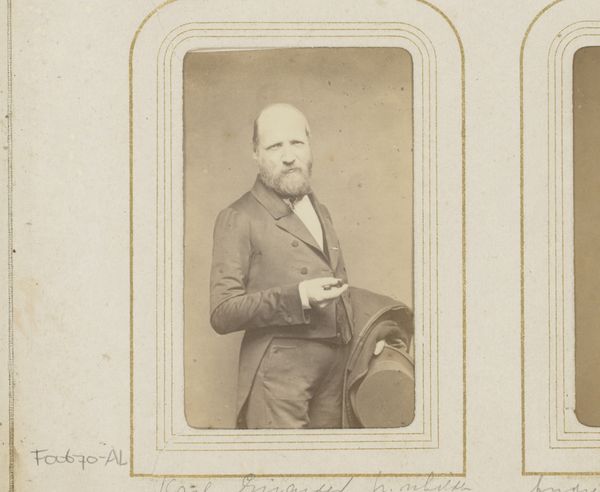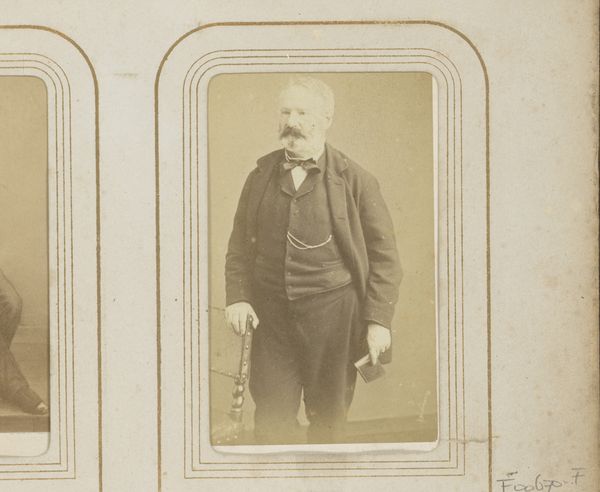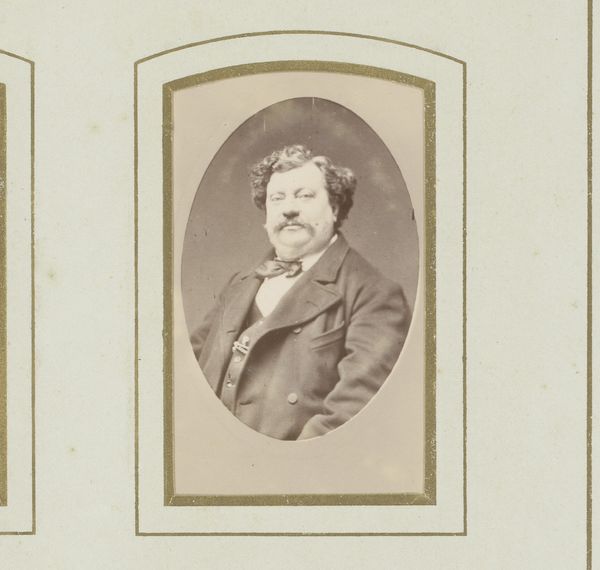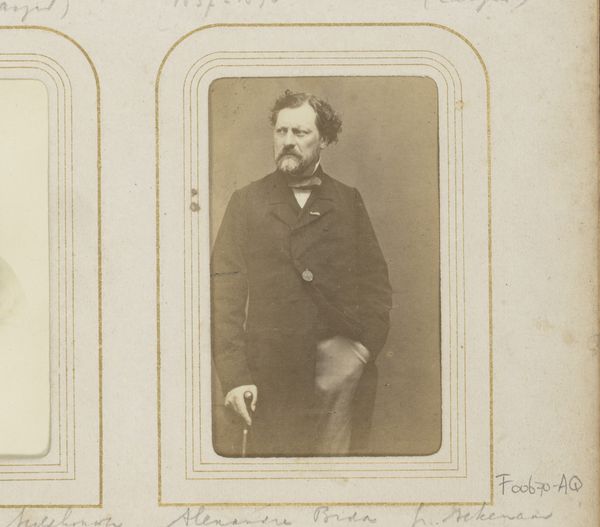
Dimensions: height 84 mm, width 51 mm
Copyright: Rijks Museum: Open Domain
This photograph of Theodore Rousseau was made by Carjat et Cie using the 19th-century technique of albumen silver printing. This process involved coating paper with a layer of egg white and then sensitizing it with silver nitrate. The negative was then placed on the paper and exposed to light. The result is a sharp, detailed image with a slightly warm tone. The albumen print was a product of its time, reflecting the rise of photography as a popular medium, and the desire to capture and preserve images of people and places. The popularity of albumen prints also reflects the growing consumer culture of the 19th century, in which people were increasingly able to purchase and collect images. Looking at this photograph through the lens of its materiality and making, we can see how it is not just a representation of Theodore Rousseau, but also a product of its own historical and social context.
Comments
No comments
Be the first to comment and join the conversation on the ultimate creative platform.
